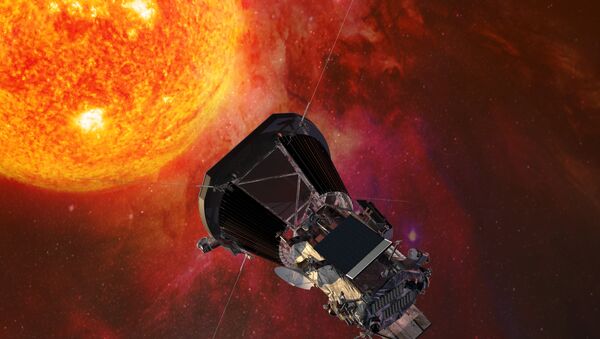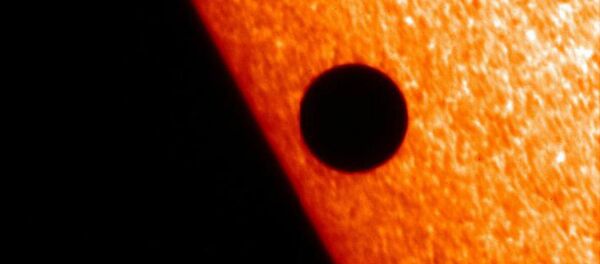NASA has revealed the details of the Parker solar probe, a mission to travel through the Sun's atmosphere and study it at a distance of about four million miles (6.4 million km).
The probe is slated for launch in summer 2018, and scientists hope it will enable them to better understand how energy and heat move through the solar corona and to explore what accelerates the solar wind as well as solar energetic particles.
The mission is "realistic, but technologically challenging," Jonathan I. Lunine, David C. Duncan Professor in the Physical Sciences and the Director of Cornell Center for Astrophysics and Planetary Science at Cornell University, told Radio Sputnik.
"The spacecraft will be experiencing temperatures of 1400 Celsius at its closest approach to the Sun, so it's necessary to shield all of the instruments and the electronics," Lunine explained.
The development in heat shield technology in recent decades has enabled scientists to build a spacecraft capable of withstanding the intense heat. The probe has a 4.5 inch [11.43 cm] thick carbon-composite shield in order to protect it from outside temperatures of nearly 2,500 F [1,377 C].
"It's worth remembering that the very first mention in the US of a mission like this was in 1958 as part of a national academy report called the Simpson report, so it's been almost 60 years since this idea was first thought up."
"Of course, it will make passes by the Sun on every orbit, because it's in solar orbit, and these passes will get progressively closer and closer as each fly-by of Venus reshapes the orbit."
The mission will provide "priceless information" about how the Sun's corona – its outer atmosphere – is heated to temperatures in excess of a million degrees Celsius, Lunine said.
"Also, to understand how the solar wind is generated, and to understand how the magnetic fields that confine these enormously hot gases, these charged plasmas within the atmosphere of the Sun, how do they actually 'fail' and allow these materials to burst through toward the Earth."
"Of course, that's when we get the effects on our communications and power systems and so forth. So actually, being there in the environment where these effects occur and being able to study them up close will give us a much, much deeper understanding of these processes and make it easier to predict the onset of such storms," Lunine said.
Have you heard the news? Sign up to our Telegram channel and we'll keep you up to speed!



